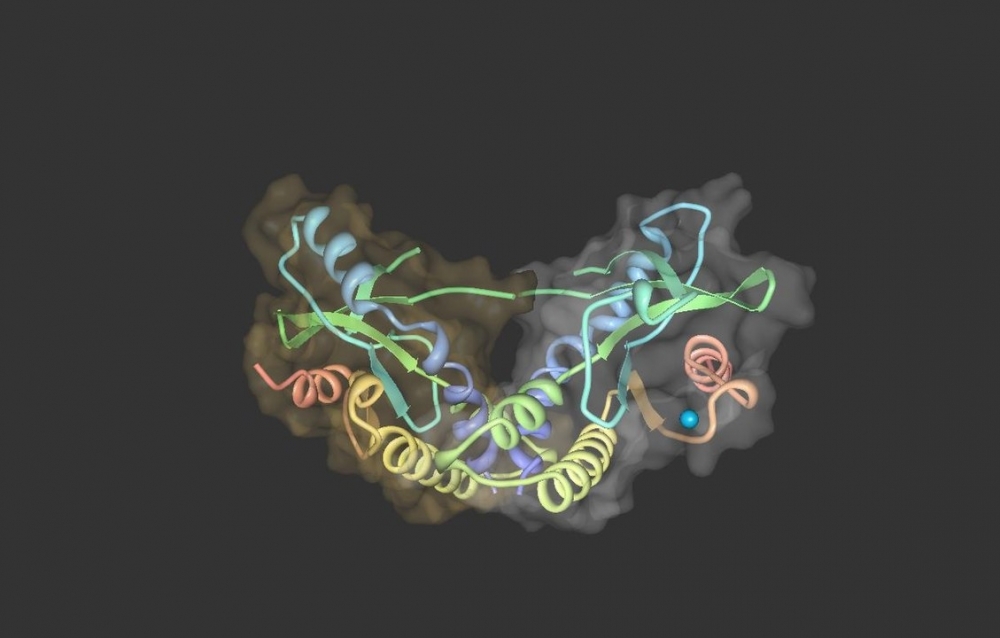

The discovery, led by researchers at a FAPESP-supported center, could lead to novel treatments for autoimmune diseases (image: Wikimedia Commons)
The discovery, led by researchers at a FAPESP-supported center, could lead to novel treatments for autoimmune diseases.
The discovery, led by researchers at a FAPESP-supported center, could lead to novel treatments for autoimmune diseases.

The discovery, led by researchers at a FAPESP-supported center, could lead to novel treatments for autoimmune diseases (image: Wikimedia Commons)
By Luciana Constantino | Agência FAPESP – An article published in the journal Cell Reports presents the findings of a study that identified a protein that can act as a sensor of tissue damage and block the inflammatory response triggered by a subtype of lymphocyte involved in the development of several autoimmune diseases.
The discovery paves the way for more studies in search of treatments for diseases such as psoriasis, rheumatoid arthritis and multiple sclerosis, in which the immune system attacks healthy cells.
The study unveiled the role of a protein called STING (STimulator of INterferon Genes) in lymphocytes, especially T helper 17 (Th17) cells.
The scientists, led by a group at the University of São Paulo’s Ribeirão Preto Medical School (FMRP-USP) in Brazil, showed that in vitro activation of STING in lymphocytes reduced their capacity to cause inflammation and triggered secretion of interleukin-10, a cytokine with anti-inflammatory functions.
“We believe activation of STING is a modulator that mitigates the Th17 cells’ inflammatory response. We think there may be a link between sensors of tissue damage and lesions caused by autoimmune inflammation of affected tissue. These lesions may inhibit the inflammatory response and prevent it from aggravating the disease,” said José Carlos Farias Alves-Filho, last author of the article and a professor at FMRP-USP.
In autoimmune diseases, defense cells attack the organism instead of protecting it against infection, producing inflammation and progressive damage to affected tissue. In multiple sclerosis, for example, the central nervous system is injured, impairing motor capacity. Psoriasis mainly involves skin lesions.
Th17 cells are known to play a key role in mediating the development of autoimmune diseases and in the progression of lesions caused by the inflammation typical of each type of autoimmune disease. Their dual nature resides in the fact that they are also involved in the organism’s defense against pathogens.
There are “pathogenic” Th17 cells, which produce IL-17 and other pro-inflammatory cytokines that can injure tissue in an autoimmune disease, and “non-pathogenic” Th17 cells, which secrete IL-10, an anti-inflammatory cytokine that can reduce lesions. DNA is released during this process.
In the literature, STING is described as an important intracellular DNA sensor. The study has now shown that this mechanism inhibits the inflammatory capacity of Th17 cells. According to Alves-Filho, STING is more frequent in non-pathogenic than pathogenic cells, and, when activated, stops pathogenic Th17 cells from causing autoimmune disease.
“Little has been published about the effects of STING on lymphocytes. We were already focusing in our lab on studies involving Th17. Here, we performed experiments that demonstrated that the protein distinguishes between the pathogenic and non-pathogenic types of Th17 cells, and showed how the mechanism works,” said Luis Eduardo Alves Damasceno, first author of the article. He is a postdoctoral fellow at FMRP-USP with a scholarship from FAPESP.
The authors are affiliated with the Center for Research on Inflammatory Diseases (CRID), hosted at FMRP-USP as one of the Research, Innovation and Dissemination Centers (RIDCs) funded by FAPESP. The study was also supported by FAPESP via scholarships (20/04170-1 and 19/15070-0) awarded to Gabriel Azevedo Públio and Guilherme Cesar Martelossi Cebinelli.
In 2020 the group discovered that an enzyme involved in key metabolic processes (PKM2) also plays a role in Th17 cell differentiation and hence in the development of autoimmune diseases. The study in question was conducted as part of Damasceno’s master’s research with supervision by Alves-Filho and reported in the Journal of Experimental Medicine (read more at: agencia.fapesp.br/34394).
Autoimmune diseases are currently treated with immunosuppressants, drugs that inhibit the activity of the immune system responsible for tissue damage, but also limit the organism’s capacity to respond to infection. Administration of these drugs leads to an overall impairment of immunity that leaves patients vulnerable to infection by bacteria, fungi and viruses. The drugs also have adverse side effects, and their usefulness is limited as a result.
Studies such as this are important because they show how cells trigger and aggravate disease. Their findings can serve as a basis for the development of novel treatments and targeting by specific drugs.
Next steps
According to Alves-Filho, the research will continue with genetically modified animals (termed conditional knockouts) as models with Th17 cells but without STING. The goal will be to induce autoimmune disease in the models and see how the inflammatory process unfolds in the absence of STING.
“One of the hypotheses we’re entertaining is that lack of STING may make the autoimmune disease worse by removing the organism’s ability to stop the inflammation. This endogenous deficiency we observed may lead to progressive injury. Without it, the disease is likely to progress faster to a severe condition,” Alves-Filho said.
The article “STING is an intrinsic checkpoint inhibitor that restrains the TH17 cell pathogenic program” is at: www.cell.com/cell-reports/fulltext/S2211-1247(22)00611-8?_returnURL=https%3A%2F%2Flinkinghub.elsevier.com%2Fretrieve%2Fpii%2FS2211124722006118%3Fshowall%3Dtrue#%20.
Republish
The Agency FAPESP licenses news via Creative Commons (CC-BY-NC-ND) so that they can be republished free of charge and in a simple way by other digital or printed vehicles. Agência FAPESP must be credited as the source of the content being republished and the name of the reporter (if any) must be attributed. Using the HMTL button below allows compliance with these rules, detailed in Digital Republishing Policy FAPESP.





